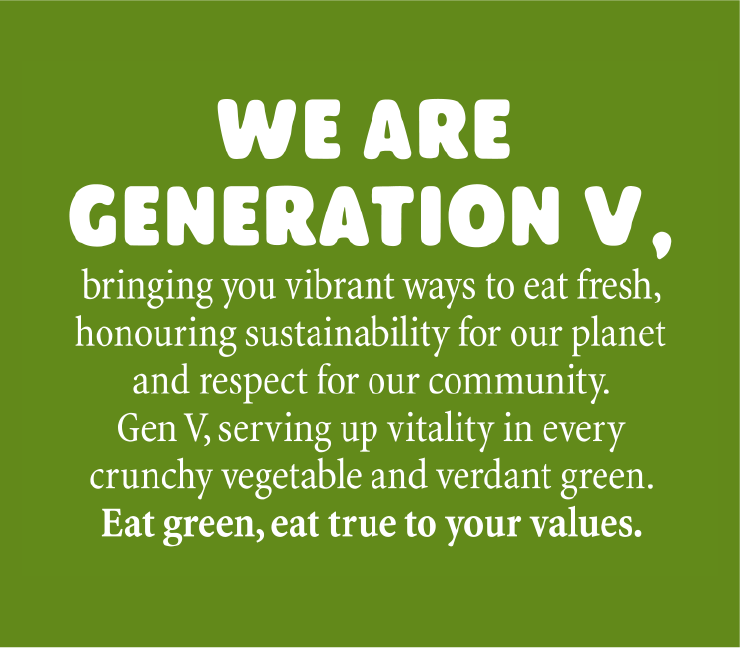Stand Out
Whoosh. There goes Q1.
As we enter Q2 and take a look back there’s a clear design trend emerging. Brand or entire pack presentation simplification is the order of the day.
Why are master brands getting behind this shift en masse? We see four key reasons.
1. The power of heritage
Before air-brushes of the 80s and Photoshop of the Noughties, logos were often simple affairs. For legacy brands, looking back in time can connect consumers to a simpler, less hectic and less complicated world. For example, Cadbury’s brave simplification takes the logo much closer to the original John Cadbury signature.
2. A response to the Challengers
We are witnessing widespread master brand simplification. Food Challengers are at the heart of this. Crashing into the market with their flat backgrounds and mono logos creating huge impact on shelf. For example ‘THIS' dumps filigree and craft in favour of all out stand out. Their Fake-Meat adorned fork stabbing aggressively in the air says it all.
3. Improved Stand Out
There’s no arguing that simplicity, when well executed, drives greater stand out at the fixture. Bold, clean lines allows for larger-scale presentation and for logos to catch the eye from a greater distance in store - delivering authority in the category.
4. Cost savings
Simpler logos = Less cost. Many presentations are simplifying down to mono logos and as well as benefiting from greater pop at shelf, much of the brand’s supporting Marcomms become simultaneously cheaper to produce. Think SRP and Shippers for example.
Naturally, this is an easier design task where logos are already strong and brand colours well recognised - see the recent 7up evolution. Dolmio have bravely redrawn their key font and replaced the letter i with an exclamation mark for some added Italian chutzpah! ECOVER have seriously decluttered and by retaining their green and blue hues have simultaneously delivered stand out and category authority.
Will your brand be next? Have a great Q2!
A snapshot of exciting launches, up and coming brands, redesigns and all things new!
Candy Kittens debuts first ‘truly sour’ sweets Shox.
Shicken secures new funds to expand plant-based Indian ready meals into the US.
PerfectTed wins Dragons’ Den backing from Steven Bartlett and Peter Jones.
Heinz & Absolut Collab For Tomato Vodka Sauce
Typically, vodka has little to no flavour, but that hasn’t stopped brands from stuffing the spirit with unorthodox and unexpected flavours.
Thankfully, when Absolut and Heinz teamed for a brand collaboration, the result wasn’t a spaghetti-bolognese-flavored vodka. Instead, the duo has announced a tomato vodka sauce made with Absolut vodka, cream, basil, and gran padano cheese. In any case, the addition of vodka results in a creamier, more aromatic sauce.
Absolut and Heinz’s sauce comes in a glass jar with a familiar Heinz keystone label featuring the vodka brand’s wordmark. The use of Absolut’s blue continues onto the tamper sticker and top of the metal lid. Heinz and Absolut also acknowledge they are years late to the vodka sauce virality on the label with "Ridiculously Late. Absolut(ely) Good.”
Source: The Dieline
Author: Rudy Sanchez
This Month’s Design Radar
Pepsi Unveils First New Logo and Visual Identity System In 15 Years
The new logo design once again incorporates the brand’s name into the red, white, and blue globe, a look that hit its stride when it was introduced in 1987 (and scrapped in 1997). The new and improved (and bigger) Pepsi wordmark feels more natural nestled inside the sphere rather than standing next to it.
Source: The Dieline
Author: Rudy Sanchez
Gen V Packaging Makes Eating Veggies Look Like Fun
Laitues Mirabel is unveiling its new visual identity inspired by the brand strategy and new name - Gen V. Fresh, tasty, and healthy vegetables, locally grown, with a respect for people and the environment.
The local family business is proudly carrying the torch of modern agriculture, with its technologically-advanced greenhouses that put a priority on sustainable energy. This mission is what inspired its new brand positioning: the agriculture of new values. Laitues Mirabel is now Gen V, a name that defines the vision of a new generation: a movement based on all things vibrant, vital, and verdant for the future.
Threesixty says: With an ethos revolving around respect for the planet their use of recycled plastic for packaging is ticking the box, however, coud there be a more obviously sustainable packaging solution on the horizon that screams recyclability!
Source: The Dieline
Author: Chloe Gordon
Clap back at inflation
Morrisons to relaunch Savers range as inflation hits record high.
The move by Morrisons comes with grocery price inflation hitting a new high of 17.1% this week according to Kantar, with Aldi achieving a record market share.
It is the latest move by the retailer as it tries to become more price competitive, with Morrisons having already invested £16m in January cutting prices across 130 lines of its Savers range.
Morrisons has also cut the price of nearly 500 products and price locked a further 600 items for at least two months, in another move to become more competitive.
It is the sixth investment in prices this year alone for the supermarket, which has struggled to keep up with the discounters during the cost of living crisis.
Meat market steps up to compete with vegan ideals
Meet SciFi: The Future Of Real Meat
For the past few years, we've found ourselves in a meatless market shift as consumers want to eat less animal flesh and help curb carbon emissions.
We're used to seeing meatless options branded differently than those containing animal products.
SciFi Foods, for example, is one of the newest brands leaning into this paradigm shift. The brand is, in fact, entirely reinventing how we consume animal products, and its lab-grown meat possesses the same taste, texture, and nutrition as its conventional counterparts but without any cruelty or harmful environmental impact.
The brand creates real, cultivated meat grown from cells to bring consumers the real beef taste. And instead of shying away from the foundation of technology and science they built the brand on, the visual identity and packaging systems lean directly into it. Part of the problem for the brand was consumers who wanted to decrease their overall meat consumption but didn't want to go all-in for a vegan or vegetarian diet.
However, SciFi saw a gap in the market and that meat eaters needed to be catered to, especially when it came to products that had a genuine meaty taste.
Source: The Dieline
Author: Chloe Gordon
GOOD Meat
GOOD Meat is real meat, made without tearing down a forest or taking a life. We are the first and only company in the world to sell cultivated meat. Our first product is GOOD Meat cultivated chicken, which Singapore has approved for sale, and is currently available at select restaurants.
GOOD Meat is a new brand from Eat Just, Inc., a food company that applies science and technology to create safe, healthy and more sustainable foods. GOOD Meat is cultivated meat, a process of making sustainable, safe meat from animal cells instead of slaughtered animals.
Source: GOOD Meat
How Are Consumers Reacting?
A survey carried out by Good Sense Research sees consumers view towards cultivated meat becoming more and more positive since the survey started in 2021. Results taken from early this year see the percentage of ‘very unnapealing’ drop from 33% to 26% and those feeling neither positive or negative rising from 20% to 30%.
In the years to follow as this new wave of cultivated meat starts to find its way in to restaurants and retail what will be said for the plant-based meat alternative market?
PlanetMindful
At every project briefing session, we bring our PlanetMindful mindset to the table.
No matter how small the incremental improvement, we're determined to help you create a more sustainable brand and a healthier planet.
Why losing brand colours on plastic packaging would quickly boost recycling rates
What is and isn’t working in the area of plastics recycling is both contentious and complex - not only in different territories around the world but also at a local level - especially in the UK.
Coloured plastics are a key challenge. Mixing colours with clear or white materials results in the grey substrates that Brands tend to be less keen on.
A movement is growing to get brand owners mentalities to shift.
Technology to separate types of polymer exist and are broadly affordable and complementary to existing recycling systems around the world. The next challenge is to separate food and non-food streams and the simplest way to do this is by keeping food stuffs in clear/white materials and non-food in pastel tinted plastics. Food & Drink Brand owners would then need to rely on graphics to distinguish products.
This would have a hugely positive impact on the recycling sector - but is unlikely to be an easy sell to Brand owners. Will governments force brands via legislation? We’ll keep you updated.
Full article here.
Sainsbury’s ditches plastic trays for vacuum packaging beef mince
Sainsbury’s has removed traditional plastic tray packaging across its entire beef mince range to reduce plastic use. In a first for UK retailers, Sainsbury’s said it would save 450 tonnes of plastic annually from the move into vacuum packaging.
It also offered a more compact pack size for the same weight than Sainsbury’s previous packaging formats, thereby also saving shelf space for consumers, it said. Additionally, the vacuum format will preserve freshness by removing all oxygen, which typically causes a product to spoil.
Source: The Grocer
Author: Grace Duncan
Seaweed Has its Eye on the Prize in the Tom Ford Plastic Innovation Prize
When the Tom Ford Plastic Innovation Prize (powered by the nonprofit Lonely Whale) put out a call for innovators, manufacturers, and scientists to develop sustainable alternatives to thin plastic packaging, sixty-four teams across twenty-six countries applied. If the finalists are any indication, we see a lot of seaweed in your future when it comes to plastic alternatives. Five out of eight of the finalists focus on seaweed-based materials, including Kelpi, Zerocircle, and Sway, an innovative materials lab we featured a couple of years ago.
Source: The Dieline
Author: Theresa Christine Johnson
Stay tuned…
Keep an eye out for next month’s edition in April…
To discuss your next project, drop Jon an email: Jon@threesixtydesign.co.uk






























